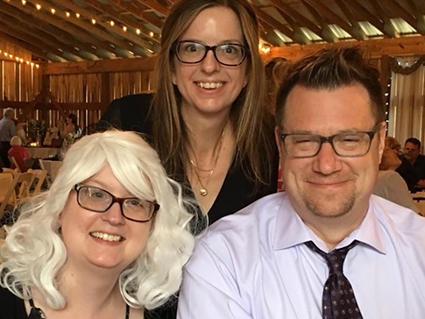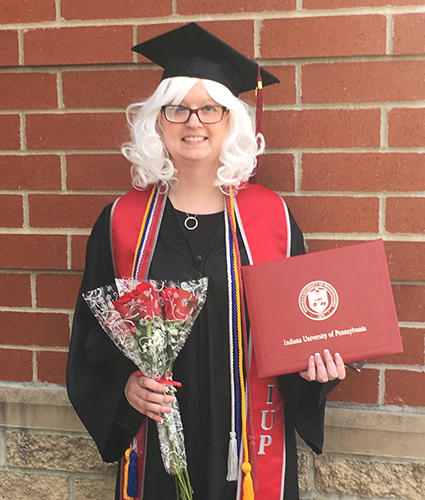Medulloblastoma Survivor Finds Hope in Clinical Trials
, by Heather, Medulloblastoma Caregiver
A mother shares her family’s 11-year quest to find the best treatments for their daughter, who was diagnosed with medulloblastoma at age 13.
In 2007 my daughter, Chelsea, was your average 13-year-old girl. She started a new school and liked music and going to concerts with her father. Chelsea was a very caring seventh grader and made friends easily.
Near the end of the school year, my parents, who saw Chelsea every day after school, shared that she was napping each day for hours. She also had frequent headaches and a concerning vomiting episode. We visited her pediatrician on June 7, who recommended a computerized tomography (CT) scan based on her symptoms, but we were not at all concerned. Less than two hours later, the pediatrician called. Chelsea needed to go to the emergency room and see a neurologist. We were also told to bring clothes because she would not be coming home. I was an emotional disaster.
Chelsea had a golf ball-sized tumor in the lower part of her brain that required next-day surgery. Five days after surgery, we found out the tumor was a type of rare brain cancer called medulloblastoma. That was the worst day of my life. We were apprehensive to share the news with Chelsea. She was undergoing physical and occupational therapy and unable to talk at this point, so felt we needed to wait. Two weeks later, we told her that she had cancer and the tumor was gone, but she needed more treatments to make sure that it didn’t come back.
The Impacts of Treatments
Physical and occupational therapy went well for Chelsea and she started radiation therapy three weeks after surgery. She had 31 treatments to her brain and spine. To celebrate radiation ending, she watched the debut of High School Musical 2 with her friends.
Chelsea had in-home teachers in eighth grade because she was starting chemotherapy with the drugs Lomustine and Cisplatin and we knew it could make her very tired and sick. After five rounds of chemotherapy, it was stopped because there was concern over hearing loss.
We were relieved the treatments were over, but we noticed the lasting cognitive effects. There were changes to her thought process, which are difficult for all of us to navigate. We had to learn to adjust and be patient and that Chelsea needs a plan and structure. I have also learned how to help her organize her thoughts while fostering her independence.
Emotionally, I had a lot of rough days at the beginning. I cried a lot, but my husband and Chelsea stayed strong. Chelsea’s worst day was when we had to shave her head, because now she’d look sick.
Trying to Return to a “Normal” Life
In ninth grade, Chelsea returned to school part-time, but nothing was like what it was before. She only went to the core classes because of her exhaustion. She went back full-time in tenth grade and realized that most of her friends had changed. School was now socially very difficult, and this continued in college.
In August 2014, she had a recurrence and was unable to go back to college due to her treatment regimen. The medulloblastoma spread to her frontal lobe and base of her spine. Because the tumor was so big in the frontal lobe, her only treatment option was chemotherapy for one year followed by 28 rounds of radiation therapy to the head and spine. After treatments, Chelsea’s scans were clear, and she returned to college in 2016 for two semesters.
In June 2017, her scans revealed her cancer was back, again. Thankfully, her professors let her study at home, and she graduated in December 2017 while undergoing chemotherapy treatments to prevent any further growth.
Seeking Out Clinical Trials
Now, at age 24, Chelsea’s medulloblastoma tumors are growing and she is too old for the available pediatric clinical trials at our current hospital. With limited options, our doctor suggested we spend quality time with Chelsea.
Fortunately, a determined friend searched for medulloblastoma clinical trials, which led us to NIH, where Chelsea would be treated as an adult and enroll in a clinical trial.
We were overwhelmed by the turnaround time and professionalism at NIH. We met with Mark Gilbert, M.D., chief of the NCI Center for Cancer Research's Neuro-Oncology Branch, and Christine Siegel, a nurse practitioner, for a consultation and learned about an immunotherapy clinical trial for rare tumors.
After two months on the trial, the treatment was not working. The NIH team remained optimistic and Chelsea had a biopsy by NIH neurosurgeon Edjah Ndoum, M.D. We learned Chelsea’s tumor subtype is a group 4 (non-WNT/non-SHH) medulloblastoma, and the doctors recommended a trial at St. Jude Children’s Research Hospital specific to her tumor subtype.
On July 31, 2018, after one-and-a-half years of no effective treatments for her medulloblastoma, Chelsea joined the SJDAWN trial, and so far her cancer is stable.
Appreciating the Bad Days and Good People
Over the past 11 years, medulloblastoma has significantly impacted Chelsea’s life. It has been rough for her to work, drive, go to school, make friends, and find love. Her personality seems unchanged, though, and she shares, “The bad things that happen are relative. Bad days are bad days. Either a breakup or cancer. But my bad days always win.”
We appreciate the amazing people in our lives who have helped us, and how our medulloblastoma journey has brought our family closer. Who knows where we would be without my determined friend and the optimism and resources at NIH.

